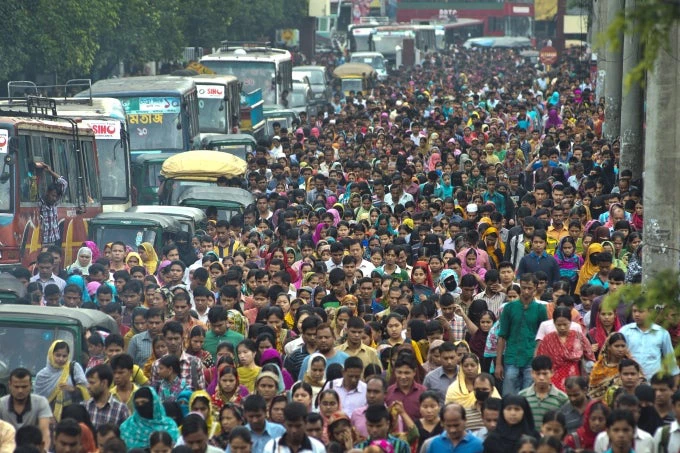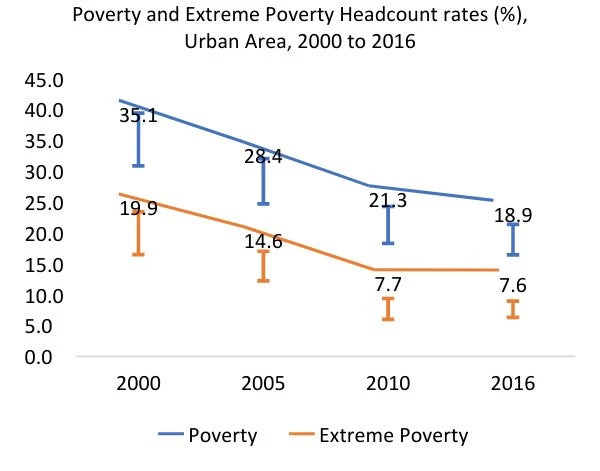
Although Bangladesh has achieved much in the way of poverty reduction and human development, progress has been slower in some urban areas.
Issues such as slow-down of quality job growth, low levels of educational attainment (notably among the youth), and lack of social protection measures have taken the wind out of the proverbial urban reduction “sail.” As the country starts fresh in the new year, it is an opportune time to reflect on some of the key issues affecting urban poverty.
Despite the steady growth in Gross Domestic Product (GDP), successive Household Income and Expenditure Surveys (2005 to 2010 and 2010 to 2016) suggest that the rate of poverty reduction has been slowing down while the absolute number of extreme poor have been increasing in urban Bangladesh. Given the accelerating rate of urbanization, it suggests that more people live in extreme poverty in 2016 than they did in 2010. With nearly 44% of the country’s population projected to be living in an urban setting by 2050, this issue is only likely to intensify.
Several factors may be driving this trend. Absence of education and skills dampen labor market participation and productivity. Among those who participate in the labor-force in urban areas, 19% of men and 28% of women are illiterate. For those who received at least some training, a recent study shows that only 51% of eighth-grade students met equivalent competency in the native language subject (Bangla). The figures were markedly lower for other subjects. Similar trends carry through to technical diploma and tertiary level institutes. As a result, many prospective employers report reluctance to hiring fresh graduates.

Urban women are particularly disadvantaged. Due to a lack of public transport and concerns arounds safety, 87% of economically active women from the poorest quintile walk for an average of 40 minutes to work, thereby limiting their access to better quality jobs beyond that radius. As a result, labor market participation among women have been falling from 34.5% in 2010 to 31% in 2016.
Although the youth represent the largest cohort of working aged population, their unemployment rates are among the highest (11% versus 1% among older groups). Youth engage more in informal employment (89% versus 83%). Alarmingly, youth also represent the largest group relegated to the “discouraged job seeker” category (59% versus 39%).
Urban households are susceptible to a variety of shocks, thereby leaving them vulnerable to falling back or becoming further entrenched in poverty . These vulnerabilities include inadequate housing and living conditions and inaccessibility of basic services such as education, electricity and health and nutrition. The cumulative effects of these vulnerabilities are reflected in the fact that the rate of severe stunting among under-5 children is 8 percentage points higher in urban than in rural areas. But mechanisms allowing households to mitigate the risk or cope with the impact of shocks are scarce.
Job creation in industry and service sectors, the largest drivers of poverty reduction, has slowed and merit urgent policy action through renewed focus on investment to accelerate the quality and quantity to ensure the bottom 40% can take advantage of these opportunities. In addition, the growing youth demographic are disproportionately unskilled and under-employed.
To take advantage of the youth bulge, focus needs to be placed on increasing the labor force participation of this cohort by improving the quality of education and skill-development programs.
Economic involvement of women in the economy are similarly imperative and policies ensuring an encouraging environment must be put into place to encourage female labor force participation. As the country gears up to hit reset in 2019, it is imperative to implement far-sighted and effective urban policies to address issues such as migration, health, housing and human capital development.


Join the Conversation